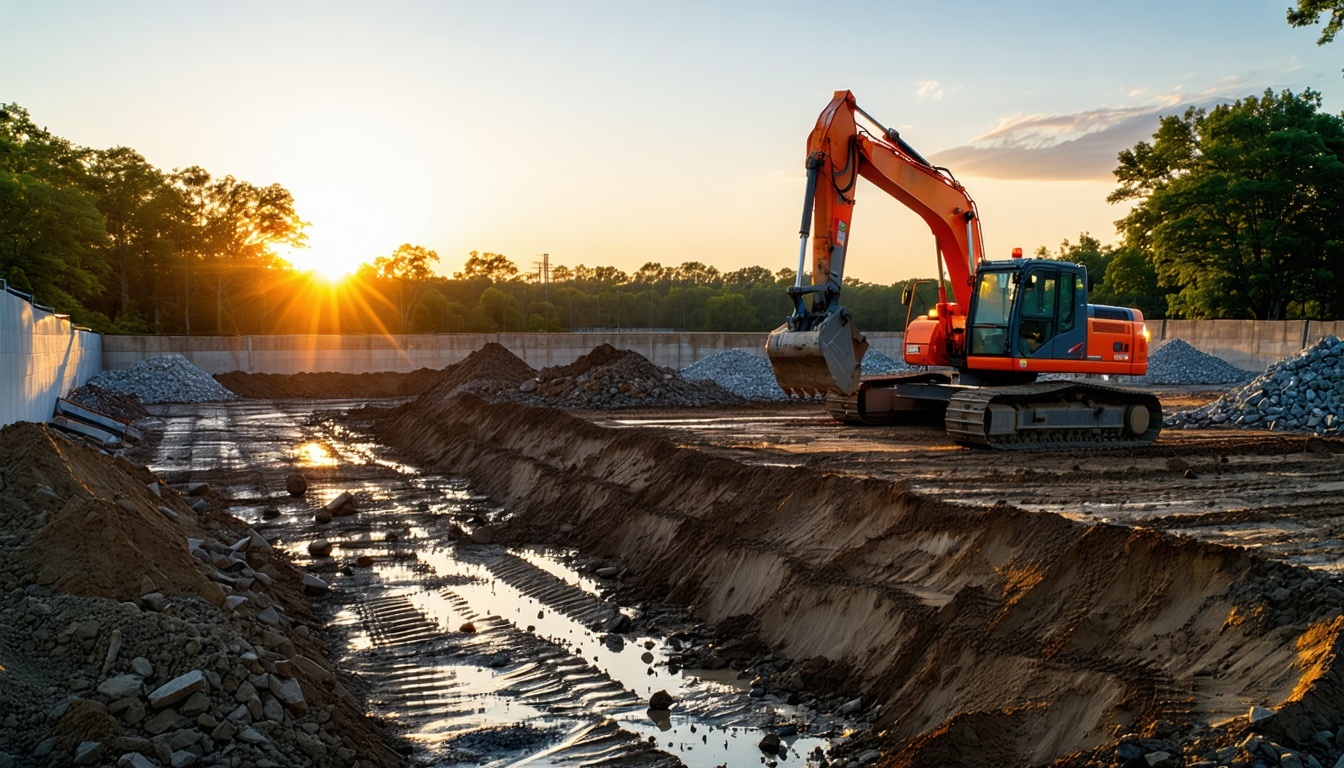KEY POINTS
- Modest growth expected for construction economy in 2026.
- Megaprojects and data centers fueled U.S. construction in 2025 and may do the same in 2026.
- Labor shortages and material costs remain significant challenges.
To shed light on the current state and future of construction, experts from the American Institute of Architects (AIA), Associated General Contractors of America (AGC), and ConstructConnect recently shared their analysis during the Construction Economy Outlook, Presented by ConstructConnect News.
What is the Current State of the Construction Economy?
While the broader U.S. economy faces a degree of unpredictability, our panel of experts predict modest growth in 2026. Inflation continues to make long-term interest rates volatile, but the Gross Domestic Product (GDP) is expected to see a slight increase in the new year.
When it comes to U.S. construction, a notable trend is the growing share of reconstruction projects, a shift influenced by an aging building stock and general economic fluctuations.
How Is the Economy Influencing Residential Construction?
For the residential market, mortgage rates remain a significant hurdle for many prospective homebuyers, even with a small rate cut in late 2025. AIA Chief Economist Kermit Baker highlighted a U.S. News survey indicating that a drop in rates to 6% could bring approximately half of potential buyers back into the market.
Despite persistent housing shortages, the industry is responding with creative strategies:
- Legislative Support: The U.S. Senate passed the ROAD to Housing Act in October 2025. This bill tasks the Department of Housing and Urban Development (HUD) with creating best practices for municipal governments to foster local housing growth.
- Accessory Dwelling Units (ADUs): In California, ADUs have seen a dramatic rise, now making up almost 50% of new single-family units. Baker noted that this is a substantial increase from just 5% seven years prior.
- Building Conversions: The conversion of office buildings into residential spaces has proven to be a viable solution. Since 1992, this strategy has created 10,000 new housing units in New York’s Manhattan, with more projects underway.
“This pace of growth is going to continue,” Baker said. “In fact, building conversions have been a very popular strategy for creating housing opportunities as well as for utilizing underutilized buildings.”
What Are the Key Trends in Labor and Material Costs?
Labor shortages and escalating material prices will remain as challenges for the construction industry in 2026.
Labor and Workforce Dynamics
Wages in construction are increasing at a rate above 4% annually, outpacing the growth in the wider economy. Ken Simonson, Chief Economist for the AGC, explains this is a direct result of firms offering higher pay to attract needed workers. Although job openings have decreased, the low rates of layoffs and quits suggest a sense of cautious stability among companies.
According to Simonson, "Workers don't see an opportunity by jumping to another construction firm or by leaving construction for other industries. And all of this is consistent with a survey that AGC completed this summer about companies' workforce experience and expectations.”
Construction Material Costs
Tariffs are a primary factor driving up the cost of essential construction materials. Year-over-year price increases are significant, with steel up by 13%, aluminum by 23%, and copper products by 4.9%. These tariff-related cost hikes are leading to project delays and even cancellations in some cases.
“Tariffs may help some manufacturers, and certainly we've seen dramatic announcements by some CEOs and even heads of state about investments that they'll be making. But those often lack specificity as to time, place, or purpose,” Simonson said. “Meanwhile, other manufacturers are holding off because they want to see what their competitive position will be once they have to pay tariffs on their own inputs—not just on the manufacturing construction costs—and whether they're going to face retaliation or discrimination from foreign competitors.”
Which Construction Sectors Thrived in 2025?
Despite difficulties in some areas, several sectors showed remarkable strength this past year. Megaprojects, defined as projects with a budget of at least $1 billion, and data centers have been the primary drivers of growth.
Data Center Construction Insights
The demand for AI and cloud computing is fueling a boom in data center construction. Here are some key statistics:
- U.S. data center starts (projects that have broken ground) have increased by 15.1% year-over-year.
- 2025 has been the most active year on record for these projects, with over $400 billion in future projects identified.
- ConstructConnect Chief Economist Michael Guckes, in his November 2025 Data Center Report, highlighted 39 late-stage preconstruction projects valued at a combined $25.5 billion, all with planned start dates before the year's end.
“Should all these projects break ground as expected, it would lift total data center starts for the year to over $58 billion, a figure that is more than double the 2024 record high,” Guckes wrote.
Megaproject Construction Insights
Megaprojects have also had a massive impact on the industry.
- Through September 2025, megaproject spending reached $134 billion, marking a 47% increase compared to 2024.
- These large-scale projects are boosting growth in nonresidential construction, compensating for slowdowns in other sectors.
During the Construction Economy Outlook, Guckes stated, “Last year was a record high, and this year is blowing away last year's record highs. So the impact of megaprojects on construction simply cannot be underestimated or underappreciated.”
What Should We Expect for the Construction Economy in 2026?
The construction industry is at a crossroads. Although some major sectors are experiencing slow growth, experts anticipate that 2026 will bring forward innovative opportunities for builders who are prepared to adapt. Here are some key considerations from our experts:
- Reconstruction, including office-to-residential conversions, will become increasingly important.
- While data centers and megaprojects will continue to lead, their long-term sustainability is a point of observation.
- To maintain profitability in this environment, firms will need to prioritize rigorous cost control and strategic bidding.
Baker commented on the trend of repurposing older structures, saying, “I think there are more opportunities in the reconstruction realm, particularly adaptive reuse and conversion of unutilized facilities. I think the demand is there.”
Guckes, meanwhile, emphasized the importance of managing expenses.
“It’s showing up in the data everywhere that firms have been sacrificing their profit margins to help keep prices stable, but that is only a temporary fix,” he said. “So, for 2026, be ruthless in cost control and make sure that you’re bidding correctly. I think that’s going to be the biggest challenge for next year for a lot of firms.”
Stay Connected
Stay connected with ConstructConnect News, your source for construction economy insights, market trends, and project news.
About ConstructConnect
At ConstructConnect, our software solutions provide the information that construction professionals need to start every project on a solid foundation. For more than 100 years, our keen insights and market intelligence have empowered commercial firms, building product manufacturers, trade contractors, and architects to make data-driven decisions, streamline preconstruction workflows, and maximize their productivity. Our newest offerings—including our comprehensive, AI-assisted software—help our clients find, bid on, and win more projects.
ConstructConnect operates as a business unit of Roper Technologies (Nasdaq: ROP), a constituent of the Nasdaq 100, S&P 500, and Fortune 1000.
For more information, visit constructconnect.com.








